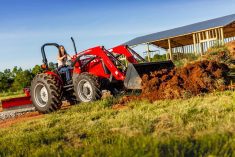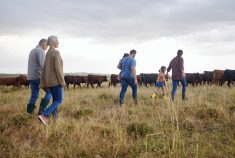In central Manitoba, a couple we’ll call Tish, 62, and Don, 65, have a dilemma. They have done well with their one section after six years of farming and 12 years of renting it to a neighbour. Their land has an estimated value of $4 million, which is a $3-million gain over their $1-million purchase cost. They have built up $800,000 in bank savings, put $350,000 in their RRSPs and accumulated $200,000 in their tax-free savings accounts. They have yet to use each of their $1-million lifetime capital gains exemption. The farm corporation has only a combine.
The couple went to certified financial planner and farm expert Colin Sabourin for advice. Their concern is financial efficiency, for Don’s farming business generates $100,000 per year before tax. He will have to start making RRIF withdrawals at age 72. They figure they can pay themselves $120,000 per year before tax growing at three per cent per year with inflation until a theoretical demise for each at 90.
The planning problem is to allocate $100,000 in dividends from their corporation, $100,000 from their farm after expenses, $20,000 from Canada Pension Plan ($10,000 each), which they are already taking, and eventual Old Age Security that may be reduced by their future income. They have $1.35 million present value in off-farm investments, mainly stocks.
Read Also

Gentle treatments for pain in the neck
Heading toward year-end, people unknowingly tense up against the cold and busyness, causing neck pain that can often be treated with appropriate support and gentle mobility, athletic therapist Kathlyn Hossack says.
They’d pass away with an estate worth more than $9 million but with a tax bill that’s more than $1 million, could they do better by paying less tax?
A possible solution
The couple purchased their farm in 2006. It is qualified farm property because Don and Tish have farmed it for six years. When they die, the capital gains exemption will reduce their estate’s tax burden.
However, because they’ve rented the farmland for more years than they’ve farmed it, the land won’t be able to roll over to their children tax deferred. The estate will have to pay tax on the capital gain that wasn’t sheltered by the capital gains exemption, Sabourin notes.
For the land to qualify for a tax-deferred rollover to their children, they must have farmed it for more years that they’ve rented it. They bought it in 2006 and farmed it to 2011. They have since rented it to a neighbour for 12 years. Thus, it will take seven years of farming the land, or entering into a custom farming arrangement in order for the land to qualify for the rollover.
Is it worth the work entailed in active farming? In the balance, there is the potential to make more than might be generated by rent, but there is risk. Renting is a simpler and perhaps safer solution. Thus, to the question: what tax savings are available, and would it be worth the hassle of entering into a custom farming arrangement?
The land was purchased for $1 million and is worth $4 million today. That’s a gain of $3 million of which Tish and Don’s capital gains exemption can shelter $2,000,000. This leaves $1,000,000 in capital gains. If Don and Tish were to pass away today, they’d be looking at approximately $250,000 in taxes owing based on this current gain, Sabourin estimates.
If we fast-forward 28 years, upon Tish’s death, the land will have grown to $6.9 million assuming a conservative two per cent annual growth rate. Even at this low growth rate, the gain that can’t be sheltered by the couple’s capital gain exemption will have grown from $1 million to $3.9 million. That’s close to $1 million in taxes being owed upon death.
Is going through all of this hassle to make sure the land can roll over to the children tax deferred worth it? If saving $1 million in 28 years is worth doing — and we think it surely is — then they should review their options with their accountant and current renter.
Furthermore, because the land is qualified farm property, the couple’s children upon receiving the land will be able to use their capital gains exemptions if they sell the land. Tish and Don have three children. Thus, they could save$750,000 of taxes ($250,000 in tax savings for each $1-million capital gains exemption used).
By setting up a custom farming arrangement, their income would be at risk of weather and crop prices. Yet Don and Tish would still hold the land until they passed away. However, instead of having their estate pay tax on gains generated over time, they could pass on the bulk of the gains to their children, who could then use their own capital gains exemption to offset tax, Sabourin concludes.















